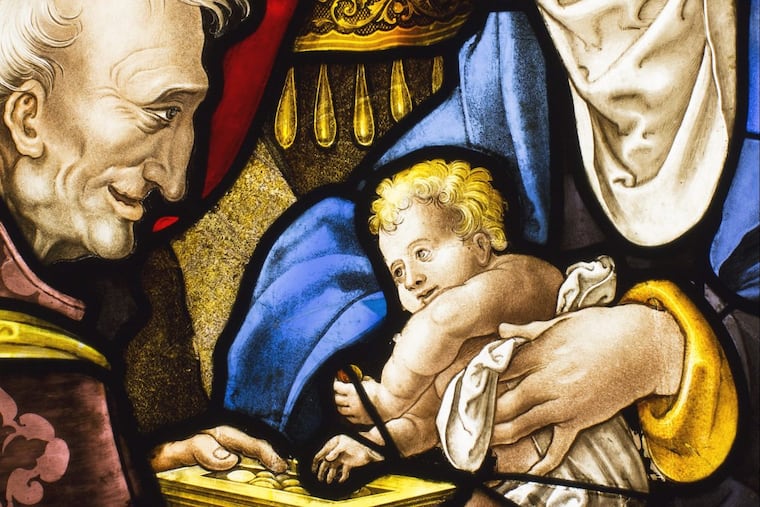Philadelphia Museum of Art announces 32 new acquisitions
The latest additions to the collection are a 16th century stained-glass window from France, 10 contemporary films and videos, nine pieces of early American furniture, and 12 Japanese paintings. The furniture will be first to go on exhibit, on July 15.

The Philadelphia Museum of Art announced Wednesday the acquisition of 32 new works spanning centuries, nations, and media. The new haul includes 10 contemporary films and videos, nine pieces of early American furniture, a 16th century stained-glass window from France, and 12 Japanese paintings purchased from a significant American collection of East Asian art.
While the works themselves have been gleaned from disparate corners of the art world, Philadelphia Museum of Art director Timothy Rub says each represents one of the "evergreen" missions in the Museum's operations — to develop the breadth of the collection.
"Let me use, for example, the pieces of American furniture we acquired," said Rub. "We have a really fine collection of American furniture here, but it tends to focus on Philadelphia." The recent additions, donated to the museum by Anne H. and Frederick Vogel III, of Milwaukee, includes some chests and daybeds from New England and makes "a kind of beautiful complement to our collection," Rub said.
The 10 works on film and video were donated by Philadelphia collectors Peter and Mari Shaw and range from single-channel projections to multi-monitor installations. Among them are Promises by Albanian artist Anri Sala, who represented France at the 55th Venice Biennale in 2013, and The Hand by French artist Melik Ohanian, a 9-monitor grouping inspired by striking workers in Paris.
The Japanese paintings, purchased from the private Gitter-Yelen Collection, include a pair of six-fold screens by Ike Taiga (1723-1776), a leading artist of the 18th-century "literati" school. There are also a pair of screens by Kano Sōeki Kagenobu, an official painter to the military rulers of Japan in the late eighteenth and early nineteenth centuries.
The stained glass window, The Adoration of the Magi, was produced by Jean Chastellain, a prominent French craftsman active in the early 1500s, and was saved in 1796 from the demolition of the Paris church where it had been installed. The six-foot-by-three-foot panel is one of eight remaining windows in what had been a 20-piece set depicting the life of Christ.
Although no tidy narrative ties the works together, museumgoers will find that some of these new artworks echo each other in the way they borrow from other media.
One of East Asian art curator Felice Fischer's favorite new pieces, for example, is a four-panel paper screen by the 19th century Japanese artist Shiokawa Bunrin. The screen is large – about five and a half feet by two feet – but its only images are a circle of 10 simple rocks without any background. The ink paintings appear to be floating in mid-air.
Rocks seems very abstract for the 1800's, but Fischer said that's because the images aren't inspired by actual stones. Bunrin based the paintings on old Chinese manuals that provide instruction on rendering flowers, leaves, trees, hills, and rocks – a kind of 17th century paint-by-numbers.
"In the printed manual, there's no background," Fischer said. "It's not that he thought of the idea of making abstract rocks. It's that he's translating a Chinese printed book into a painted ink version on a screen."
Jack Hinton, the European decorative arts curator who acquired the stained-glass window, described a similar story. Hinton said the 16th century glass is unique because it samples techniques not only from other glass makers, but from Italian Renaissance painters.
Most medieval stained glass uses small pieces of colored glass to make up a bigger picture. "But what this guy, Jean Chastellain, did instead was use really large chunks of glass, with all these different colors," Hinton explained. "He had this understanding of how you could use different painterly techniques to add depth and texture."
David Barquist, curator of American decorative arts, also noted that some of the newly acquired pieces of furniture involved techniques borrowed from house builders.
"In the late 17th century in France and England, there's this moment where a method called joinery becomes very popular," Barquist said. "And the same people that are building houses are making furniture using the same kind of construction."
The furniture will be the first of the acquisitions to go on display, in an exhibit opening July 15.